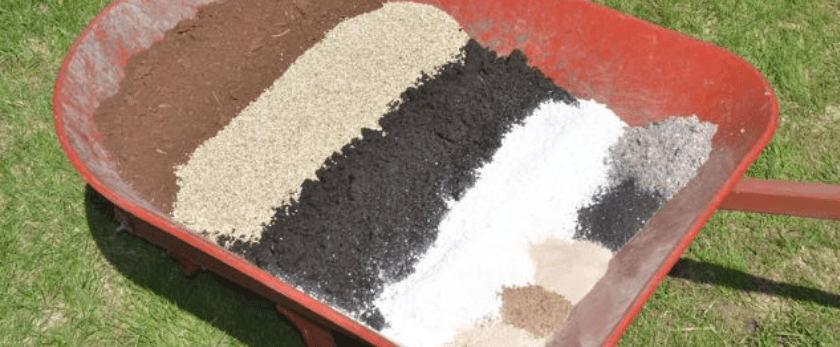Are you tired of buying expensive potting soil that is harmful to the environment? Do you want to reduce your carbon footprint and make a positive impact on the planet? Look no further, because making your own potting soil is a simple and effective way to do just that.
In this article, we will discuss the negative impact of store-bought potting soil on the environment, the benefits of making your own, and provide a step-by-step guide on how to create your own homemade potting soil. So let's get started!
The Environmental Impact of Store-Bought Potting Soil
Many people are unaware of the negative impact that store-bought potting soil has on the environment. Here are some reasons why:
-
Peat Moss: Peat moss is a common ingredient in store-bought potting soil. It is harvested from peat bogs, which are important ecosystems that provide habitat for many plant and animal species. The extraction of peat moss destroys these habitats and releases carbon into the atmosphere, contributing to climate change.
-
Transportation: Most store-bought potting soil is produced in large factories and then transported long distances to reach consumers. This transportation contributes to air pollution and carbon emissions.
-
Packaging: Store-bought potting soil is often packaged in plastic bags, which end up in landfills and take hundreds of years to decompose. This adds to the growing problem of plastic pollution in our environment.
-
Chemicals: Many store-bought potting soils contain synthetic fertilizers and pesticides, which can harm beneficial insects and pollute our waterways.
The Benefits of Making Your Own Potting Soil
Making your own potting soil not only reduces your environmental impact, but it also has many other benefits:
-
Cost-effective: Making your own potting soil can save you money in the long run. You can use ingredients that are easily accessible and affordable, such as compost and garden soil.
-
Customizable: When making your own potting soil, you have the freedom to customize it to suit your specific gardening needs. You can adjust the nutrient levels, pH balance, and texture to best suit the plants you are growing.
-
Sustainable: By making your own potting soil, you are using natural and sustainable ingredients that are better for the environment and your plants.
-
Healthy for plants: Homemade potting soil is free from harmful chemicals, making it healthier for your plants and the environment.
What You Will Need
Making your own potting soil is a simple process that requires a few basic ingredients. Here's what you will need:
-
Compost: Compost is a nutrient-rich soil amendment that is made from decomposed organic matter. It provides essential nutrients for plant growth and improves soil structure.
-
Garden Soil: Garden soil is the top layer of soil in your garden. It contains a mix of sand, silt, and clay, along with organic matter. Garden soil adds texture and structure to your potting soil.
-
Perlite or Vermiculite: These are lightweight, porous materials that help with drainage and aeration in potting soil.
-
Coconut Coir: Coconut coir is a sustainable alternative to peat moss. It is made from the fibrous husks of coconuts and helps with water retention in potting soil.
-
Eggshells: Eggshells are a great source of calcium for plants. They also help to balance the pH of the soil.
-
Baking Soda: Baking soda helps to neutralize the acidity in the soil.
-
Large Container or Tarp: You will need a large container or tarp to mix all the ingredients together.
-
Gardening Gloves: It's always a good idea to wear gardening gloves when handling soil to protect your hands.

How to Make Your Own Potting Soil
Now that you have all the necessary ingredients, let's get started on making your own potting soil. Follow these simple steps:
-
Start by mixing equal parts compost and garden soil in a large container or tarp. This will be the base of your potting soil.
-
Add in a handful of perlite or vermiculite to the mixture. This will help with drainage and aeration.
-
Next, add in a handful of coconut coir. This will help with water retention in the soil.
-
Crush up some eggshells and add them to the mixture. This will provide calcium for your plants and help balance the pH of the soil.
-
Sprinkle a small amount of baking soda over the mixture and mix it in. This will help neutralize the acidity in the soil.
-
Mix all the ingredients together thoroughly until well combined.
-
Your homemade potting soil is now ready to use! You can store it in a large container or use it right away in your garden or potted plants.
Responsible Disposal of Store-Bought Potting Soil
If you have leftover store-bought potting soil, it's important to dispose of it responsibly. Here are some tips:
-
Reuse: If the potting soil is still in good condition, you can reuse it for future gardening projects.
-
Compost: You can also add the potting soil to your compost pile. This will help break down the synthetic fertilizers and pesticides, making it safe for use in your garden.
-
Recycle packaging: Make sure to recycle the plastic bags or containers that the potting soil came in.
Conclusion
Making your own potting soil is a simple and effective way to reduce your environmental impact and create a more sustainable future. By using natural and sustainable ingredients, you can create a healthier and more cost-effective option for your plants. So why not give it a try and see the difference it makes in your gardening journey? Your plants and the planet will thank you.










